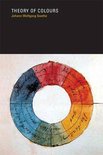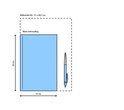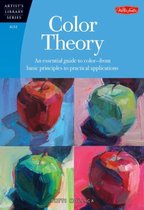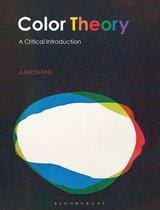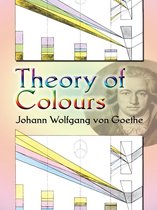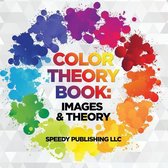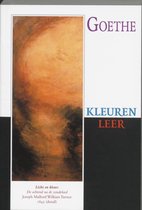Theory Of Colours
Afbeeldingen
Artikel vergelijken
- Engels
- Paperback
- 9780262570213
- 15 maart 1970
- 486 pagina's
Samenvatting
By closely following Goethe's explanations of the color phenomena, the reader may become so divorced from the wavelength theory-Goethe never even mentions it-that he may begin to think about color theory relatively unhampered by prejudice, ancient or modern. By the time Goethe's Theory of Colours appeared in 1810, the wavelength theory of light and color had been firmly established. To Goethe, the theory was the result of mistaking an incidental result for an elemental principle. Far from pretending to a knowledge of physics, he insisted that such knowledge was an actual hindrance to understanding. He based his conclusions exclusively upon exhaustive personal observation of the phenomena of color. Of his own theory, Goethe was supremely confident: From the philosopher, we believe we merit thanks for having traced the phenomena of colours to their first sources, to the circumstances under which they appear and are, and beyond which no further explanation respecting them is possible. Goethe's scientific conclusions have, of course, long since been thoroughly demolished, but the intelligent reader of today may enjoy this work on quite different grounds: for the beauty and sweep of his conjectures regarding the connection between color and philosophical ideas; for an insight into early nineteenth-century beliefs and modes of thought; and for the flavor of life in Europe just after the American and French Revolutions. The book does not have to be studied to be appreciated. Goethe's subjective theory of colors permits him to speak most persuasively of color harmony and aesthetics. In some readers these notions will evoke a positive response on their merits. Others may regard them as pure fantasy, but savor the grace and style of their exposition. The work may also be read as an accurate guide to the study of color phenomena. Goethe's conclusions have been repudiated, but no one quarrels with his reporting of the facts to be observed. With simple objects-vessels, prisms, lenses, and the like-the reader will be led through a demonstration course not only in subjectively produced colors, but also in the observable physical phenomena of color. By closely following Goethe's explanations of the color phenomena, the reader may become so divorced from the wavelength theory-Goethe never even mentions it-that he may begin to think about color theory relatively unhampered by prejudice, ancient or modern.
Productspecificaties
Wij vonden geen specificaties voor jouw zoekopdracht '{SEARCH}'.
Inhoud
- Taal
- en
- Bindwijze
- Paperback
- Oorspronkelijke releasedatum
- 15 maart 1970
- Aantal pagina's
- 486
- Illustraties
- Nee
Betrokkenen
- Hoofdauteur
- Johann Wolfgang Goethe
- Tweede Auteur
- Johann Wolfgang von Goethe
- Hoofduitgeverij
- INGP
Vertaling
- Eerste Vertaler
- Charles Lock Eastlake
- Tweede Vertaler
- Charles Lock Eastlake
- Co Vertaler(s)
- Charles Lock Eastlake
- Originele titel
- Theory of Colours:
Overige kenmerken
- Extra groot lettertype
- Nee
- Product breedte
- 127 mm
- Product hoogte
- 25 mm
- Product lengte
- 203 mm
- Studieboek
- Nee
- Verpakking breedte
- 129 mm
- Verpakking hoogte
- 25 mm
- Verpakking lengte
- 196 mm
- Verpakkingsgewicht
- 526 g
EAN
- EAN
- 9780262570213
Je vindt dit artikel in
- Categorieën
- Taal
- Engels
- Boek, ebook of luisterboek?
- Boek
- Beschikbaarheid
- Leverbaar
- Studieboek of algemeen
- Algemene boeken
Kies gewenste uitvoering
Kies je bindwijze
(3)
Prijsinformatie en bestellen
De prijs van dit product is 26 euro en 99 cent.
Uiterlijk 3 mei in huis
Verkoop door bol
- Prijs inclusief verzendkosten, verstuurd door bol
- Ophalen bij een bol afhaalpunt mogelijk
- 30 dagen bedenktijd en gratis retourneren
- Dag en nacht klantenservice
Shop dit artikel
Rapporteer dit artikel
Je wilt melding doen van illegale inhoud over dit artikel:
- Ik wil melding doen als klant
- Ik wil melding doen als autoriteit of trusted flagger
- Ik wil melding doen als partner
- Ik wil melding doen als merkhouder
Geen klant, autoriteit, trusted flagger, merkhouder of partner? Gebruik dan onderstaande link om melding te doen.
